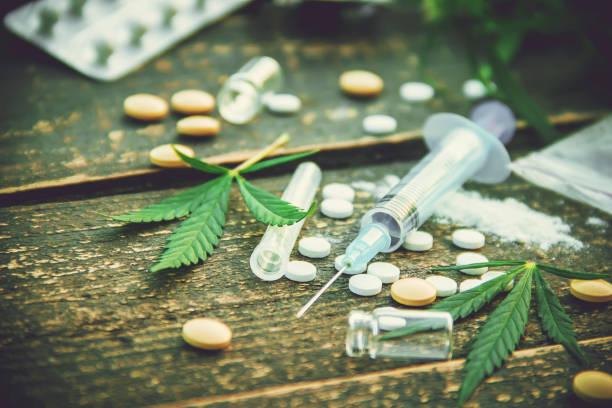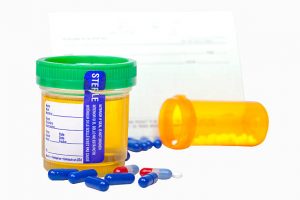
9 Panel Drug Test (Drugs of Abuse Testing), Urine
$69.00
About Our 9 Panel Drug Test (Drugs of Abuse Testing), Urine
Our 9-test panel drug test uses urine to check for the presence of drug abuse. In comparison to our 12-panel drug test, this test covers the most popular illicit drugs, also known as “street drugs” which are rarely prescribed.
Description
What is tested in the 9 Panel Drug Test?
- 6-Acetyl Morphine (6-AM)
- Amphetamines/Methamphetamines
- Barbiturates
- Benzodiazepines
- Cocaine Metabolites
- Marijuana Metabolites: Tetrahydrocannabinol (THC)
- MDMA (Ecstasy/Molly)
- Opiates (including Hydrocodone, Hydromorphone, Codeine, and Morphine)
- Phencyclidine (PCP)
How drug testing works?
When you take a drug, the body will eventually breaks it down. When this happens, it releases byproducts known as “metabolites,” which are expelled through urine. Our test looks for the presence of these metabolites in the urine. While everyone’s metabolism works differently, the detection period of drugs is usually about the same for most people. The presence of the metabolites is highly predictable and a reliable indication that the patient has recently been exposed to the drugs tested.
Because this test uses a urine sample, you can expect your results to be way more accurate than a blood test would be for drug testing, due to the drug leaving the blood a lot faster than it does urine. In addition to this, supplying a urine sample is non-invasive, painless, and, most of all, has a longer detection period for drugs. Another alternative test is a hair test, and although it has a 90-day detection period, it also costs about 3-4 times more.
Drug Detection Windows
- 6-Acetyl Morphine (6-AM) – 1 – 2 days
- Amphetamines – 1-4 days, depending on type.
- Barbiturates – short to intermediate-acting barbiturates: 2 days. Long-acting: 1-3 weeks.
- Benzodiazepines – short-acting; 2 days, intermediate-acting; 5 days, long-acting; 10 days.
- Cocaine (benzoylecgonine metabolite) – 3 days.
- Marijuana (THC) – Depends on usage. A single use can be detected for up to 7 days, while an everyday user can test positive between 10-30 days.
- MDMA (Ecstasy/Molly) – 1-3 days.
- Opiates (including Hydrocodone, Hydromorphone, Codeine, and Morphine) – 1-4 days.
- Phencyclidine (PCP) – 14 days.
More about the 9 Drugs tested in this Panel
6-Acetyl Morphine (6-AM) – Is an intermediate metabolite between heroin and morphine. Generally, 6-AM is present for a short time after use of heroin. A finding of 6-AM in urine or oral fluid is a specific indication of heroin use or exposure
Amphetamines – Amphetamines are a powerful and addictive class of drug that stimulates the central nervous system. They are at times prescribed to treat Parkinson’s Disease, ADHD, and narcolepsy. Most amphetamines can be detected for 1-4 days after use in urine.
Barbiturates – A group of drugs that produce calming, pain relieving, and loss of consciousness effects, similar to those of alcohol. They are extremely potent drugs that affect the central nervous system. Short-acting barbiturates can be detected for 1-2 days, while long-acting versions can be detected for 1-3 weeks
Benzodiazepines – Likely best known today for drugs like Valium and Xanax, benzodiazepines are class of psychoactive drugs that are considered to be a type of tranquilizer. Abuse can cause a physical dependence. These drugs can be detected for up to 3 days after taken in prescribed doses, and up to 4-6 weeks if used chronically.
Opiates (Hydrocodone, Hydromorphone, Codeine, and Morphine) – Opiates are derived from the poppy plant. They are used for recreational and medicinal purposes. Some well know opiates are legal such as codeine and morphine, and some are illegal such as heroin. Hydrocodone stays in urine 1-2 days; hydromorphone is 3-4 days; codeine is 2-3 days; morphine is 2-4 days.
Cocaine – This powerfully addictive and stimulative drug is a Schedule II. It can be administered by a doctor for certain uses such as local anesthesia for some ear, eye, and throat surgeries. The test can detect cocaine in urine up to 2-4 days after use.
Marijuana (THC) – Marijuana is a commonly used drug made from the Cannabis sativa or Cannabis indica plant. It comes in many forms, some are dried flowers, stems, leaves, and extracts. It’s legalized in many states. THC is the psychoactive ingredient that affects the brain cells for the desired effect that users desire. THC can be detected in urine for one time users for 2-7 days, and for chronic users up to 10-30 days.
MDMA (Ecstasy/Molly) – MDMA is mainly distributed in tablet form. MDMA tablets are often sold with logos, creating brand names for users to seek out. The colorful pills are often hidden among colorful candies. MDMA is also distributed in capsules, powder, and liquid forms. It acts as both a stimulant and psychedelic, producing an energizing effect, distortions in time and perception, and enhanced enjoyment of tactile experiences. MDMA mainly affects brain cells that use the chemical serotonin to communicate with each other. Serotonin helps to regulate mood, aggression, sexual activity, sleep, and sensitivity to pain. Clinical studies suggest that MDMA may increase the risk of long-term, perhaps permanent, problems with memory and learning.
Phencyclidine (PCP) – PCP, or “Angel Dust,” is an addictive, mind-altering drug that can cause hallucinations. It is a dissociative drug, meaning it warps sight, sound, color, sense of self, and environment. It is available in tablets, capsules, and colored powders which can be smoked, orally, or by being “snorted.” Urine tests can detect PCP for 7-14 days.
How to Prepare and What to expect?
Do not drink an excessive amount of liquids before the test. It is commonly thought that high amounts of liquid will reduce the chances of a positive result, but instead, it waters down the urine, and risks the test being judged “invalid.” An invalid result means the technician was unable to deem the test positive or negative and new sample must be obtained to provide accurate results.
When you go to the lab, you will need to present an official I.D. along with your test order form that is emailed after ordering the test. Upon arrival, you sign in and soon will be brought to the back where a lab technician will explain what is needed for your sample. You can expect to be given a small container and go to a private bathroom where you can collect your urine sample.
Explaining the Results
After providing the sample, it takes 1-2 business days for you to receive your results. If the results are positive, it can take an additional 2-4 business days of extra testing to confirm the positive result.
Your results will either indicate positive, negative, or inconclusive/invalid. Each drug test has a threshold that the detected levels need to exceed in order to be declared positive.
- A positive result means that a high amount of metabolites were found in your urine for the drug indicated. Our results will tell you which drug you were positive for, along with the concentration of metabolites found in your sample.
- A negative result means the drug you tested for was not detected in your urine, or it fell below the threshold needed to be decided positive.

